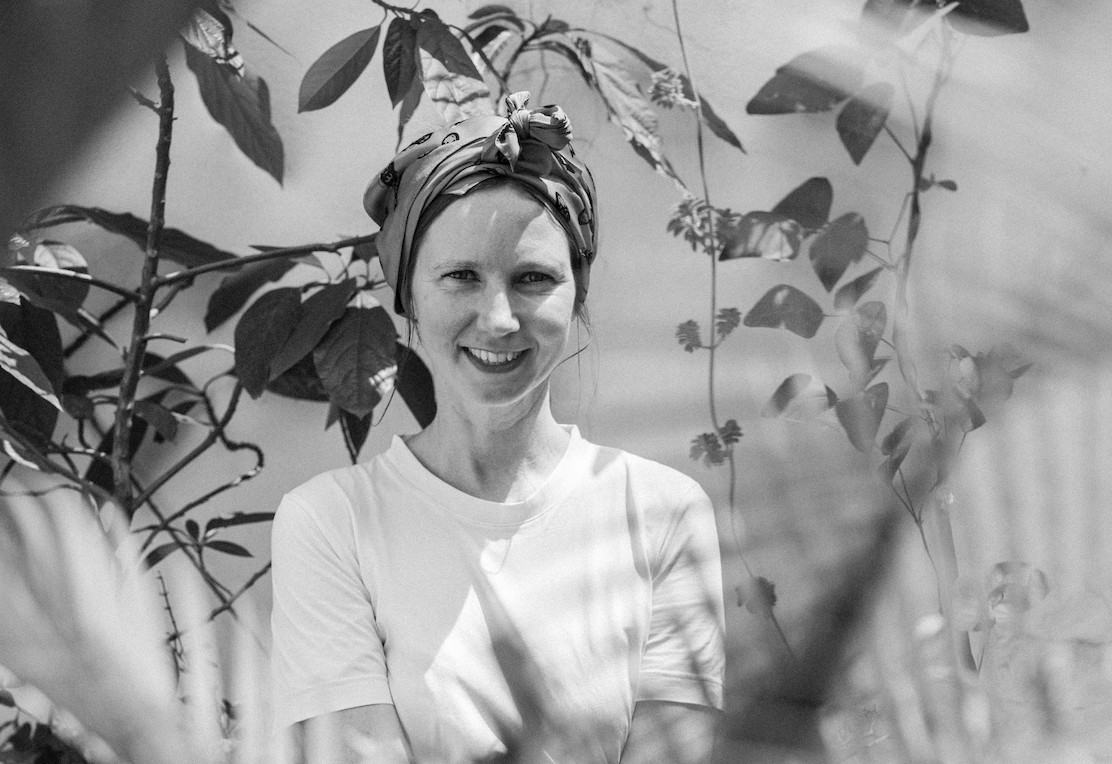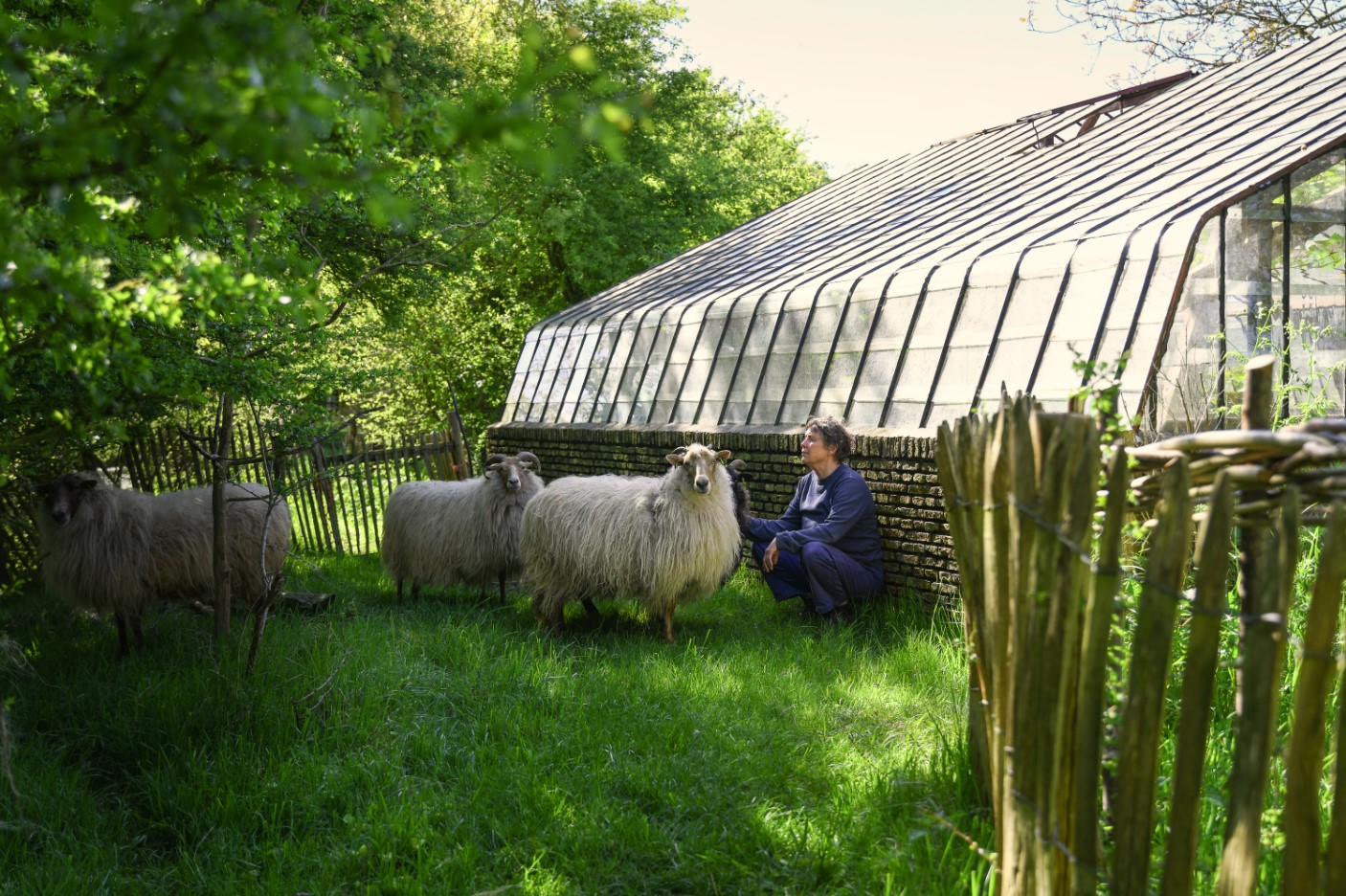► českou verzi článku najdete zde
How did it happen that a woman from England who worked in cinemas ended up in New Zealand healing people and trying to help our planet?
I believe that we never really know where we are heading until we get there, even though we like to think we do. But really, I have not “ended up” anywhere yet; I am only halfway through! Who knows where the rest of my life will take me?
In your book “Living Legacies - a natural funeral handbook for an evergreen world“ you call our society “a race of consumers and wasters” who “feed the illusion of immortality“ for whom death is not understood and accepted as a natural part of the life cycle. You offer people the opportunity to get realistically involved in the death care process again, without fear, high costs or superficiality. How can we imagine this de-institutionalisation of death?
Perhaps like the change in our approach towards birth. In my generation, and my parents’, most babies were born in hospitals or maternity homes, and giving birth at home was frowned upon and actively discouraged. But that started to change in the sixties and seventies when women empowered themselves to make their own choices about where and how to give birth. Likewise we do not all have to die in hospitals, and we do not have to rely on funeral professionals to whisk dead bodies away while we are left at home to cry. We can actively participate in the whole process - and those who do, generally feel much better about it than they would imagine.
How can we participate?
Living Legacies offers empowerment, support and practical assistance to families who want to plan and arrange a low-cost, family-directed, natural funeral. Essentially I facilitate the family in caring for their dead, disposing of the body, and creating an appropriate farewell or memorial to mark the loss. Everyone who wants to participate has a role, and it is a powerful family bonding and community building experience. Someone will write a life story, someone else will complete the paperwork or organise the catering or flowers and someone will build a coffin or care for the body. Everyone is involved, and by doing so, they can feel better, save money, and reduce the environmental impact of the funeral.
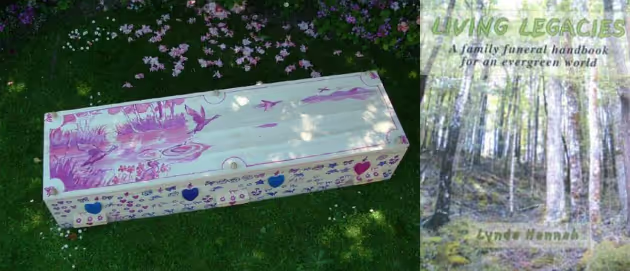
A hand painted coffin - a great way to personally participate in the funeral and say goodbye to the dead person. (Photo archive of Lynda Hannah)
You emphasize that we always have a choice. What is according to you the best funeral for our Earth?
Actually the best choice for the Earth would probably be the same that happens to every other species. The body falls on the ground and the scavengers, birds, carnivores, bugs, fungi, bacteria, etc. gradually and totally recycle every atom it contains. But this feels unacceptable to us - we understandably do not like the sight or smell of decomposing dead bodies around us. Therefore the next best option is natural burial (without embalmment) in a shallow grave so that the microorganisms in the soil ecosystem can still participate in the process. The less human interference there is in the process (such as embalming chemicals, and non-biodegradable boxes, clothing, etc.), the better for the planet.
How to keep the body fresh without chemical embalming?
Keeping it cool and dry is crucial. Using salt water and essential oils helps as well. The details are all explained in my book: Living Legacies - a family funeral handbook for an evergreen world.
What is the best material for coffins considering the environment?
Coffin materials must be biodegradable, locally grown, and sustainably managed. Natural untreated wood, willow, bamboo, wool, hemp or flax are all good options. Definitely no MDF (editor’s note: medium density fibreboard), and hardwood is also inappropriate.
You are the advocate for natural burial parks where people can plant trees instead of gravestones. Where did you get this idea and how did you managed to make it happen?
Natural burials are what most cultures worldwide have practiced until the last few centuries in European history. Lately, they have become less ‘natural’, with the invention of tombstones, Victorian vaults and crypts, petrol lawnmowers, modern cemeteries, embalming or synthetic coffins. The recent natural burial movement started in Britain in the early 1990s and quickly spread across the UK. I brought this idea to New Zeeland by raising people’s awareness of how unnatural the mainstream funeral process is, lobbying local and national government to establish natural burial parks, encouraging people to lobby their local MPs and councillors, and not resting until we had achieved it. Now there are several natural burial parks across Aotearoa, and more are being created.

In the natural burial parks trees are planted on the grave instead of gravestones. (Photo archive of Lynda Hannah)
In what ways does funeral planning affect the emotional states of the participants?
The good funeral does not remove grief and neither does a bad funeral cause it. Grief is a normal and healthy expression of the loss experienced when someone we love dies. But being emotionally, financially and practically prepared for it definitely helps reduce the emotional costs, by removing some of the stress, fear or anxiety felt with the sadness.
Aotearoa – New Zealand – is the land of Maori people. How do their burials look like? Have they inspired you when you were creating the concept for the Pakeha? (Editor’s note: Pakeha is a name for white people according to Maori.)
Many Maori funeral traditions are very similar to how Pakeha traditions used to be before funeral directors took over the process. They hold a tangi, which is like a wake, where everyone comes to farewell the deceased, support each other, and rebuild their community. It takes several days. There is the preparation and taking care of the body, chanting, singing or praying, and usually lot of eating, drinking, telling stories, and reminiscing. It is a great community building process that brings people who may not have seen each other in a long time together, strengthening the families and communities.
The topic of communities is also brightly connected with your life. You lived several years with your children in a school community in the Graham Valley near the Kahurangi National Park where the children were taught by the parents.
Yes, it was a small, private, democratic school run by the families themselves with minimal government funding. I feel grateful that my family was able to be part of it for 5 years. My second book “A little book about growing” was inspired by this experience, and it has continued to inspire me in what I am doing now.
In what way?
I have learned there much about grassroots democracy, inclusivity and exclusivity, power imbalances, hierarchies and personal empowerment.
You are also interested in beekeeping. What can we learn from bees about collective behaviour and cooperation?
Everything! Bees are a microcosm of community! But to answer this question fully, it would require writing a book, and it has probably already been done. They are totally focussed on the common good, the health of the whole hive, sometimes at their own personal cost, and have exquisitely evolved for this. Unfortunately, humans are endangering their delicate balance with pesticides and imported pests, the varroa mite for example. Apparently it takes the whole lifetimes of 12 bees to make one teaspoon of honey! That is dedication. We need to treat them with a lot more respect.

Bees do not give just honey. From their wax, Lynda makes soaps, candles and creams. Propolis is a precious medicinal product, which is used in tinctures, creams and even toothpaste. (Photo by Živa Blažková)
In your life, you are using the principles of permaculture, for which sustainability, integrity, fairness and diversity is essential. Can people who are living in towns incorporate these principles into their lives as well?
Permaculture is not limited to rural areas, farms or gardens. It is a set of design principles and ethics that are applicable to all aspects of life, from orchards to business boardrooms, from architecture to schools, from family dynamics to career planning. We can all apply the permaculture ethics and principles to all aspects of our lives. The major problems in the world now are caused by not applying them. We have to start with ourselves, be the change we want to see.
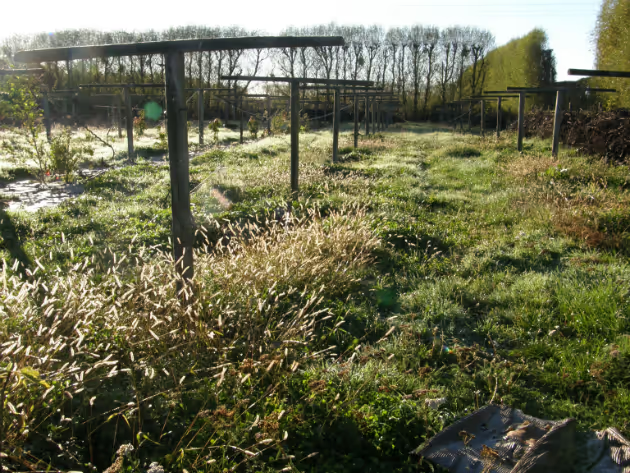
This is the way the commercial kiwi orchard is being transformed into a permaculture forest garden. The wooden posts, which were earlier supporting kiwi trees, find new use by fencing the vegetable beds or they became structures for vines and berries. (Photo by Živa Blažková)

Permaculture in practice: the old bathtub became a pond for the ducks. It is also their hideout - underneath they sleep and lay eggs. (Photo by Lynda Hannah)
What is according to you the difference between the approach of natural medicine and pharmaceutical medicine?
The most important point is that natural medicine treats people, not illnesses. I don’t focus on the sore throat or the insomnia, but on the person who has these symptoms. We are all products of our environment, and that includes our own past, our diet, social setting, our fears and anxieties or our work and motivations. Our genes and family support systems is also important, as well as our beliefs and attitudes, drugs or medications (prescribed or not) or our joys and sadness. All these factors together need to be taken into account when someone is unwell, not only the symptoms.
How does your session with a patient looks like?
The first consultation is usually longer, because I take full medical history, including all those points above, and more. We explore all the relevant facets of the patient’s present condition and I get a sense of who they are, what matters to them or what are their strengths and weaknesses. Then over the next few days I formulate a treatment plan. It usually involves herbal tinctures, often some diet and lifestyle suggestions, and possibly referrals to other specialists. At the next consultation I present the treatment plan and explain all the details of it.
What happens next?
Following the treatment plan is entirely optional but of course, if people are motivated enough to come and see me they are usually motivated enough to follow my recommendations. Big changes usually take time and small steps, and it is easy to overwhelm people with too many steps at once. However, sometimes, especially after years of chronic disease and deteriorating health, big changes may be necessary, and I can support people emotionally through this.
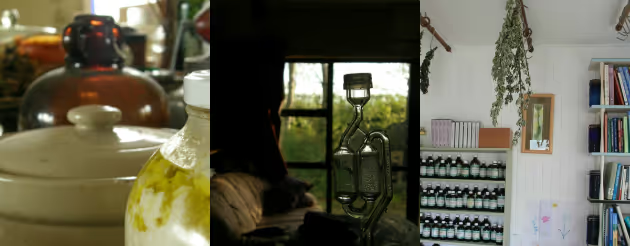
Lynda´s clinic. Herbal tinctures are an important part of most treatment plans. (Photo archive of Lynda Hannah and Živa Blažková)
What do you think about people accepting their mortality?
I believe it is important that people realize the reality of their mortality and live their lives accordingly. Every minute becomes precious when you do not know how many more you have. Nothing is wasted. People, who truly accept this, live differently. And being prepared, making informed decisions in advance, and communicating this openly and lovingly with one’s family, makes it all easier - both the living and the dying.

